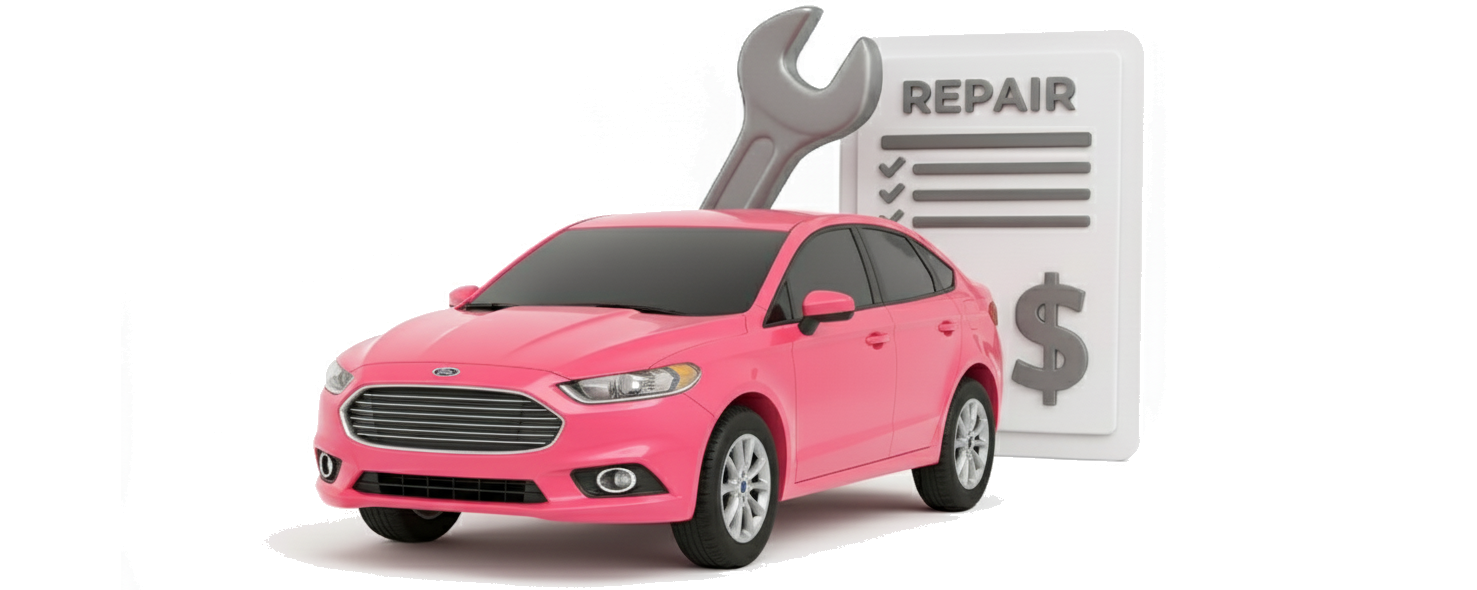Get precise estimates for your car and location using an online estimator like the one in the Jerry app.
Real customers Jerry helped
Pricing can vary based on different factors like location, parts used, and exact vehicle, but Jerry uses real customer experiences to stop the guesswork and show what drivers are paying right now. Here are some examples:
Estimates are modeled based on real vehicle and location data; names have been changed. Actual prices will vary by shop, parts, and vehicle condition.
The service explained: what is tire mounting and balancing?
Tire mounting is the physical act of removing a tire from a wheel (the metal rim) and installing a new one. A technician uses a tire machine to pry the old tire off and then fit the new tire onto the wheel, ensuring an airtight seal is formed at the bead so it can be inflated properly. On sensitive or expensive wheels, shops should use touchless machines or plastic guards to protect the face and lips.
Tire balancing happens after mounting. A computerized balancer detects tiny weight imbalances, and the tech then attaches small counterweights to ensure smooth operation.
- Ask for dynamic balancing (two-plane) for most cars, not just static.
- If you still feel a highway shimmy after a normal balance, request road-force balancing—it measures stiffness variation to fix “can’t-balance” shakes on low-profile or sensitive setups.
- It’s reasonable to ask the shop to aim for ≤0.25 oz per plane residual imbalance when possible.
- For new tires, match-mounting (aligning red/yellow dots with the valve stem or wheel low spot) can reduce the amount of weight needed.
- On painted/polished wheels, specify stick-on weights inside the barrel—avoid hammer-on weights on the visible outer lip.
When do you need this service?
Jerry customers may find a need for tire mounting and balancing in the following scenarios:
When buying new tires:
The #1 reason. Any time you replace worn-out or aged tires, they must be professionally mounted and balanced on your existing wheels.
When repairing a flat tire:
Proper puncture repair requires dismounting the tire to patch from the inside and then remounting and rebalancing.
When replacing a TPMS sensor:
The sensor lives inside the tire, so the tire must be dismounted. Many shops also install TPMS service kits (new seals/cores/caps) during tire work to prevent leaks.
When installing new wheels (rims):
If you upgrade to custom or aftermarket wheels, your existing tires (or new ones) will need to be mounted and balanced on them.
Cost breakdown: why mounting & balancing costs vary
Jerry customers are seeing prices swing based on a few known factors:
Tire and wheel size:
Large, heavy truck tires or stiff, low-profile tires on large rims take more time and care, so they may require additional labor time.
Run-flat tires:
Reinforced sidewalls make them stiffer and more labor-intensive; shops charge a premium.
Shop type:
Dealerships typically charge the most. Big-box retailers and dedicated tire shops often offer the most competitive pricing.
Common add-ons to budget for (ranges vary by region):
- TPMS service kits: ~$5–$12 per wheel (seals/cores/caps)
- TPMS relearn/programming: ~$0–$30 total (some cars self-learn; others need a tool)
- Valve stems (non-TPMS): ~$3–$8 each
- Tire disposal / environmental / shop supplies: ~$3–$8 per tire (each line)
- Road-force balance upcharge (if needed): ~$10–$25 per tire
- Low-profile/run-flat handling: ~$5–$15 per tire
- “Brought-in tires” surcharge: ~$5–$20 per tire at some shops
Skip the phone tag: Jerry can surface all-inclusive quotes from local shops so you can compare true out-the-door prices side by side.
Your action plan: how to get it done right
Determine your needs
Are you replacing worn-out tires, fixing a flat, or installing new wheels? Note your tire size (from the sidewall) and whether wheels are alloy or steel. If your TPMS sensors are 7–10 years old, budget for replacements or at least service kits.
Shop around for an “out-the-door” price
Call at least two shops—or let Jerry compile all-inclusive quotes. When calling, ask verbatim:
“What’s the out-the-door price to mount and dynamic-balance four tires sized [your size] on [steel/alloy] wheels?”
“Does that include TPMS service kits (if needed), valve stems (if non-TPMS), tire disposal, shop supplies, and any road-force upcharge if there’s a vibration?”
“Any surcharge if I bring tires I purchased online?”
“Do you hand-torque lug nuts and offer a free re-torque after 50–100 miles?”
“Do you use stick-on weights only on alloy faces and have touchless equipment?”
“Can you relearn/program TPMS on my vehicle if required, and what does that cost?”
Ask about online tire installation
If buying tires online, confirm any outside-tire fee and whether shipping directly to the shop is allowed.
Schedule an alignment
Book an alignment check with your mounting appointment. At drop-off, request:
Clean the hub/rotor hat before mounting (prevents runout).
Match-mount tires (use red/yellow dots) when applicable.
Stick-on weights inside the barrel on alloys.
Torque to factory spec with a torque wrench (star pattern).
Before you leave
Confirm tire pressures match the door-jamb sticker. Verify directional/asymmetric orientation. Take a quick highway drive (55–70 mph). If there’s a shimmy, return for a re-balance—ask for road-force if a standard re-balance doesn’t fix it.
DIY vs. pro: why mounting is a job for the shop
Attempting to mount a tire without proper machinery is nearly impossible and dangerous. A pro shop has calibrated equipment to do the job safely and correctly, ensuring airtight sealing and smooth balance.
Related services to consider
Jerry customers are bundling mounting and balancing work with the following services:
- Wheel alignment: An alignment check is smart with new tires. Only pay for a full adjustment if readings are out of spec. A bad alignment can chew through a new set in a few thousand miles, and you won’t notice until it’s too late.
- Tire rotation plan: Rotate every 5,000–6,000 miles (follow your owner’s manual; AWD and directional/staggered setups may change the pattern). Many shops offer free rotations for the life of the tires if you purchase them there.
Use Jerry to track rotation intervals and keep quotes/invoices in one place so you never miss a money-saving rotation.

What our customers are asking
-
Is balancing necessary every time?
-
What is a “road hazard warranty”?
-
What if my TPMS light comes on after the service?

Spencer Clayton is a mechanic, writer and fabricator who has hands that know their way around engines and a passion for storytelling. He’s diagnosed complex faults, built high performance engines and custom fabricated everything from fine detail parts to entire chassis while sharing how things work and why they matter. His background in everything from dealership technician work to building high performance cars spans a large breadth of experience, and he is driven by a love of all things automotive and a desire to share knowledge.

Nick Wilson is an editor, writer, and instructor across various subjects. His past experience includes writing and editorial projects in technical, popular, and academic settings, and he has taught humanities courses to countless students in the college classroom. In his free time, he pursues academic research, works on his own writing projects, and enjoys the ordered chaos of life with his wife and kids.








